The state of Florida has some of the highest snake populations and most diverse snake species in the entire country. Swamps, coasts, forests, and marshes all provide homes to an immense number of scaly reptiles, and Florida has a lot! If you live in Florida, run-ins with wildlife are an inevitability. Still, it’s important to know what kind of animal you are looking at when you stumble across one. Today, we are going to look at the complete list of rat snakes in Florida and how to identify them. By the end, you should be able to tell exactly what kind of rat snake you just found in your backyard!
What Is A Rat Snake?
Rat snakes are a group of snakes that belong to the subfamily Colubrinae, a large group of snakes characterized as being medium to large constrictors. They primarily eat rodents and are found in the Northern Hemisphere. There are Old World and New World rat snakes, but the ones that most people in the United States are familiar with are the New World species.
There are 14 species of rat snakes in the New World, two of which live in Florida. Additionally, there are a few snakes that are closely related to rat snakes (they also belong to the subfamily Colubrinae) that can be confused for rat snakes as well. The names of these snakes sometimes have spaces (rat snake) and sometimes don’t (ratsnake), with no clear reason why.
Let’s explore and learn to identify all the rat snakes in Florida!
A List Of Ratsnakes In Florida
Eastern Ratsnake
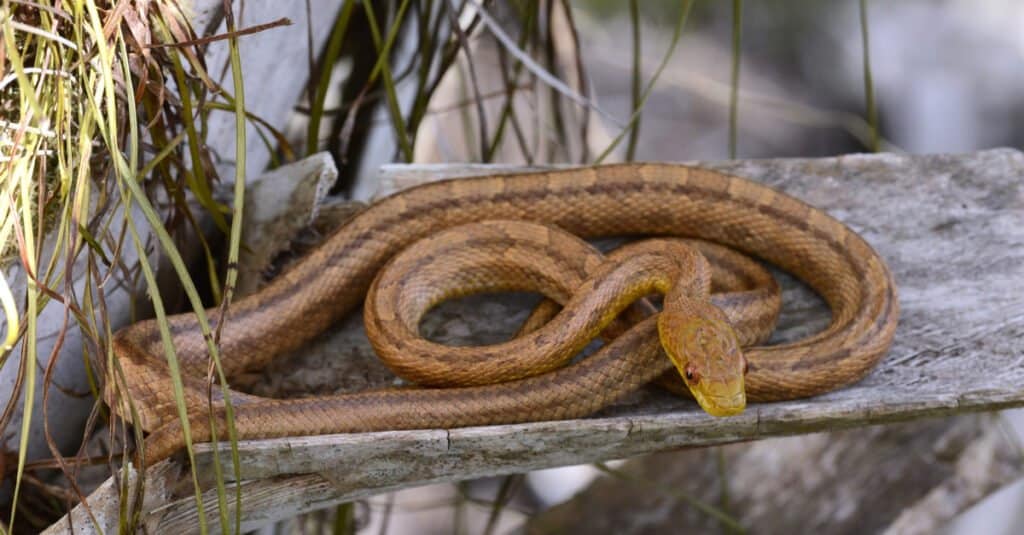
The juvenile eastern rat snake has brown to black blotches on a gray background and a somewhat squared-off snout.
©Patrick K. Campbell/Shutterstock.com
The most common rat snake in Florida is the eastern ratsnake. This snake goes by many names, including rat snake, chicken snake, yellow ratsnake, and the everglades rat snake. To make matters even more confusing, chicken snakes can also refer to a distinct species of rat snake found in southern Mexico and into South America, and the everglades ratsnake is occasionally believed to be its own species of rat snake. Additionally, all these snakes interbreed, making things even more complicated.
Identifying An Eastern Ratsnake: Eastern ratsnakes are yellow, orange, tan, or gray and have four stripes running down their back from head to tail. The tail stripes can be black or dark brown. Juveniles are usually gray and will occasionally have blotches of color that carry over into adulthood. Although eastern ratsnakes can be black, individuals in Florida are not.
Adult snakes reach 42-72 inches in length, with juveniles being smaller.
They can be found across the entire peninsula and into Key Largo. In the panhandle, they can be found east of the Apalachicola River.
Gray Ratsnake
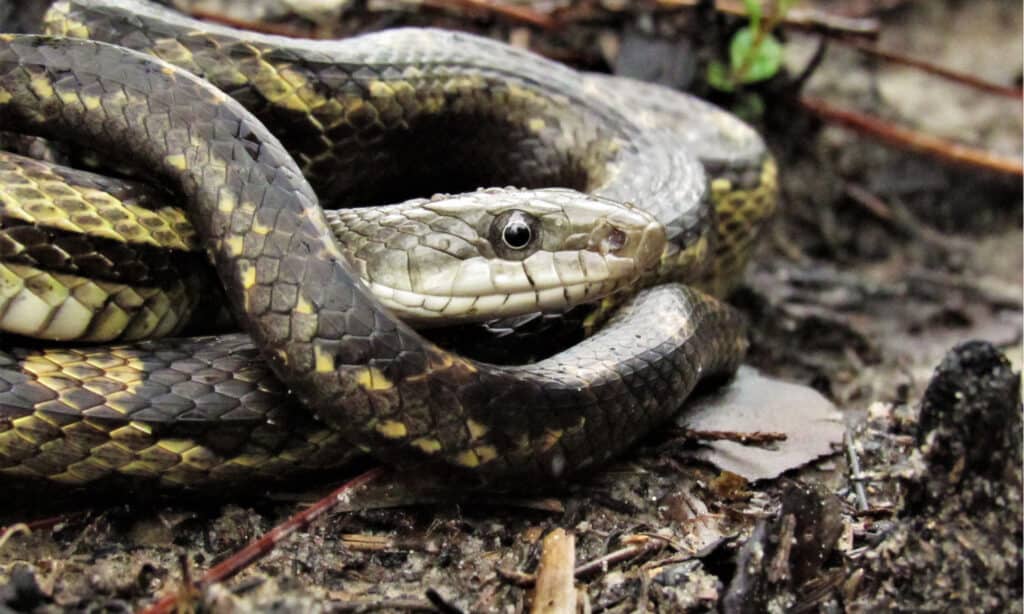
The gray ratsnake is light gray and has large, darker splotches across its back.
©Gabbie Berry/Shutterstock.com
The gray ratsnake is another common snake in Florida, although its range is more limited than that of the eastern ratsnake. This snake goes by a few names, including the gray rat snake, oak snake, and white oak snake. Gray ratsnakes are also known to interbreed with eastern ratsnakes, making hybrids rather common.
Identifying A Gray Ratsnake: Gray ratsnakes are light gray with large, dark splotches down their back. They have gray bellies with a dark pattern of blotches. Juveniles are also gray and look very similar to adults. The main way to identify the two species is the lack of stripes on the gray ratsnake and the presence of blotches on the eastern ratsnake.
Adults usually measure 42-72 inches in length, with juveniles being much smaller.
Gray ratsnakes have a smaller range than eastern ratsnakes. They are found in Florida, but only west of the Apalachicola River in the panhandle.
Similiar Snakes Related To Ratsnakes
There are a lot of other snakes in Florida! Here are a few possible options if the above descriptions don’t match.
Corn Snakes
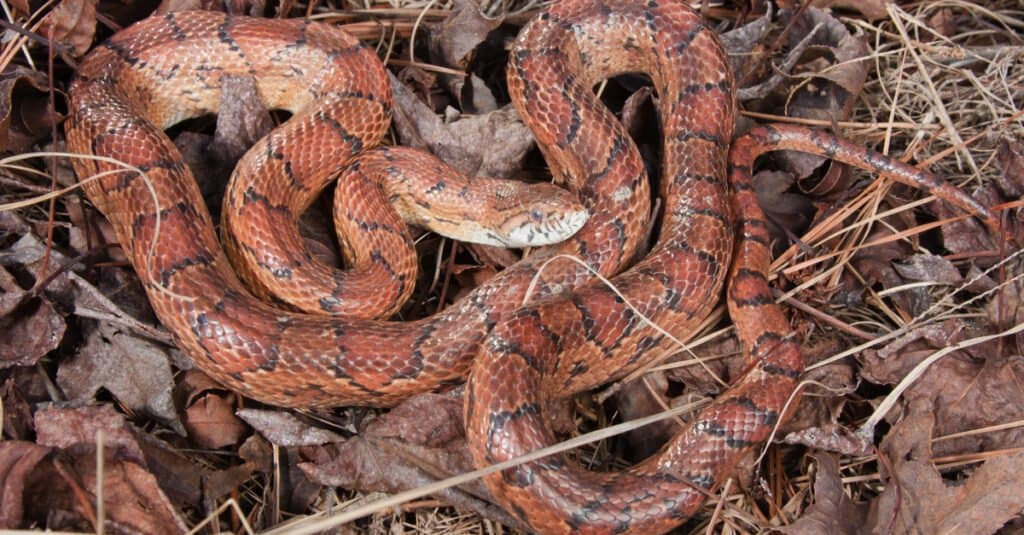
Corn snakes sound like rattlesnakes when they rattle their tails in leaf litter.
©Nathan A Shepard/Shutterstock.com
It isn’t commonly known, but corn snakes are actually a subspecies of New World rat snakes. They are generally red, orange, and brown, with patterned blotches across their entire body. Corn snakes are found throughout Florida, even down into the Keys. Coloration and location are the best ways to differentiate these snakes from gray ratsnakes. When it comes to eastern ratsnake comparison, pattern and color are key.
Milk Snakes
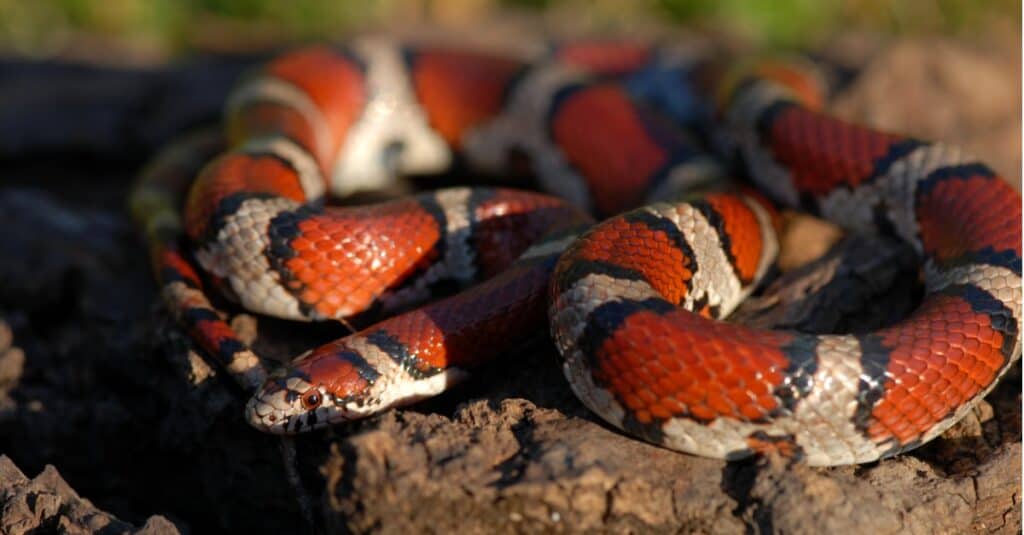
Milk snakes have red body segments with black and yellow or white-banded segments between them.
©iStock.com/Shoemcfly
The milk snake (scarlet kingsnake, scarlet milk snake) is another Florida native, although it is rather distinct in appearance. Milksnakes are small snakes with large patches of red separated by black-yellow-black patterned rings. Their coloration and the specific pattern are generally a great tell, and they live through the entirety of Florida.
Kingsnakes
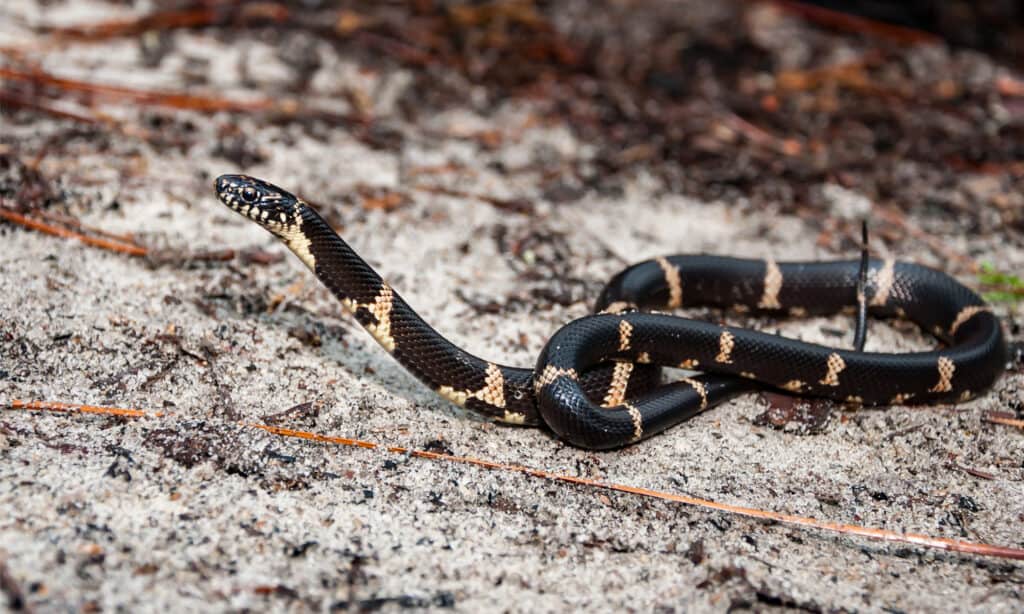
The eastern and Florida kingsnakes have bands running down their bodies. Mole kingsnakes are much more checkerboard.
©iStock.com/JasonOndreicka
There are a few species of kingsnakes in Florida, namely the Florida kingsnake and the eastern kingsnake. Both snakes are thicker and darker than your average ratsnake and have some form of banding across their bodies, whereas ratsnakes have head-to-tail striping.
Garter Snakes
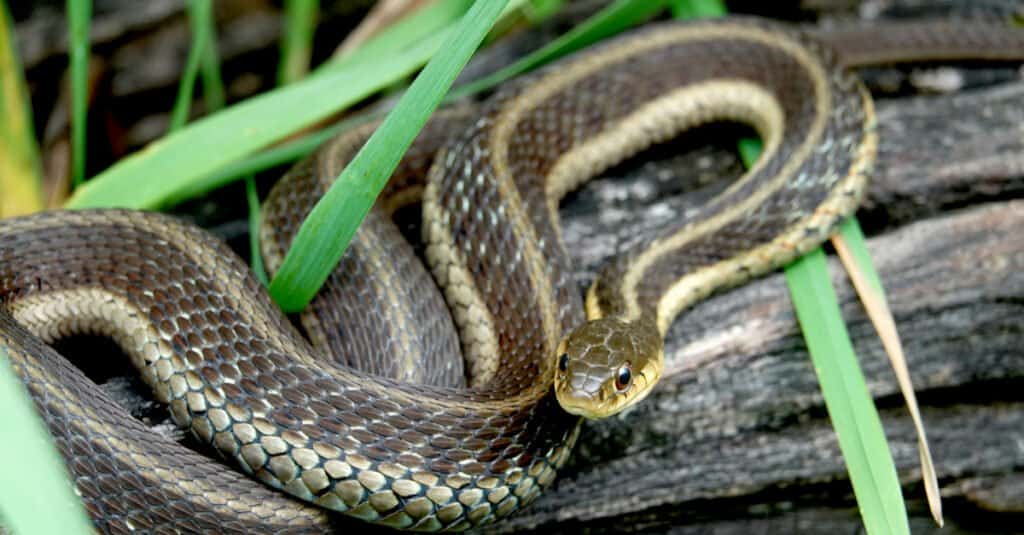
Garter snakes are very similar to rat snakes but only have three stripes.
©Erik Agar/Shutterstock.com
The common garter snake may be the closest in appearance to ratsnakes. The easiest way to tell the difference between the two are size and color. Garter snakes are small and thin, only measuring 26 inches as adults. Additionally, they are normally black, brown, or tan with three stripes running down their back (one dark middle one and two lighter ones on the sides). The stripes are usually yellow, brown, blue, or white.
Copperheads
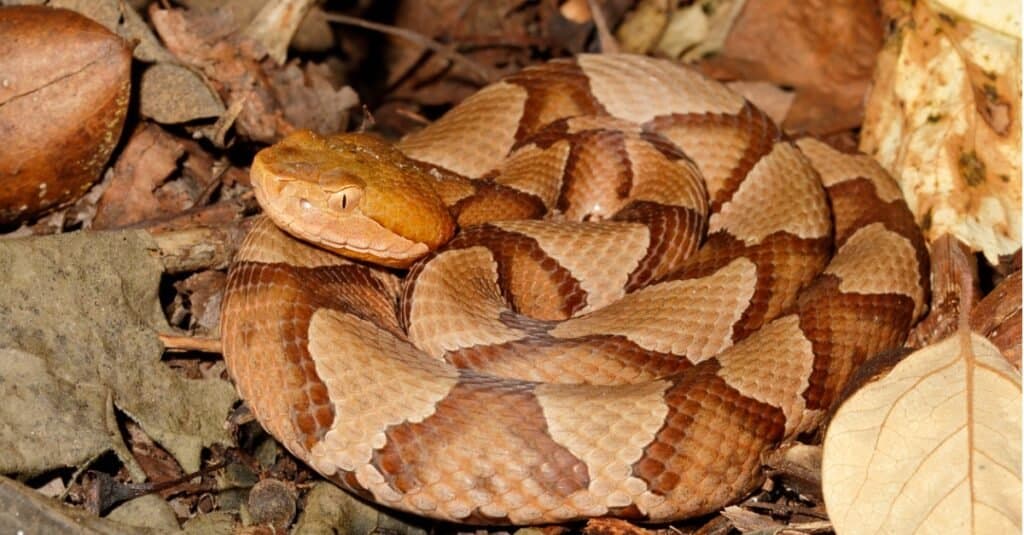
Copperheads have thick scales over their eyes and hourglass-shaped blotches down their back.
©iStock.com/David Kenny
These copperheads are dangerous snakes that can occasionally resemble the gray ratsnake. Copperheads only live in the panhandle of Florida, mainly along the Apalachicola River and its associated tributaries. The main differences between a copperhead and a gray ratsnake are body thickness and pattern shape. Copperheads have thicker bodies with wavy hourglass-shaped blotches across their backs. They are pit vipers with visible, small pits between their eyes and their snout on each side of their head.
The photo featured at the top of this post is © dkHDvideo/Shutterstock.com
Discover the "Monster" Snake 5X Bigger than an Anaconda
Every day A-Z Animals sends out some of the most incredible facts in the world from our free newsletter. Want to discover the 10 most beautiful snakes in the world, a "snake island" where you're never more than 3 feet from danger, or a "monster" snake 5X larger than an anaconda? Then sign up right now and you'll start receiving our daily newsletter absolutely free.
Thank you for reading! Have some feedback for us? Contact the AZ Animals editorial team.






